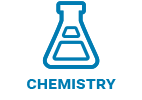 R&D SYMPOSIUM 3
R&D SYMPOSIUM 3
Lithium Battery Chemistry
31 January 2017 | Congress Centrum Mainz | Mainz, Germany
Part of the 7th Advanced Automotive Battery Conference Europe
The European Advanced Automotive Battery Conference attracts international thought leaders and battery technologists to discuss key issues impacting the electrification of vehicles. As the electric vehicle market expands with increasingly strict regulatory deadlines, the need to improve batteries and enhance performance while lowering cost has never been stronger. AABC provides a scientific and interactive forum to explore these challenges.
In this session, leading materials R&D professionals will review the prospects of advanced cathodes, anodes, and electrolytes to deliver better performance, life, and safety, at equal or lower cost than current chemistries, and to provide enhanced value for large Li-Ion batteries.
Final Agenda
Tuesday, 31 January
7:30 Symposium Registration and Morning Coffee
8:30 Chairperson’s Opening Remarks
Martin Winter, Ph.D., Chair, Applied Material Science for Energy Conversion and Storage, MEET Battery, Research Center, Institute of Physical Chemistry, University of Muenster
8:35 Development of High Performance Carbon Anode Material
Takafumi Izawa, Researcher, Battery Materials Research Laboratory, Kurashiki Research Center, Kuraray Co., Ltd.
This talk introduces development of high performance hard carbon with two axes. One axis is to provide more power to the battery and the other axis is more capacity. Our developmental target is to have more capacity in terms of both gravimetric (mAh/g) and volumetric (mAh/cc) than graphite.
8:55 Carbonaceous Anode Materials and Conductive Additives as Key to Higher Performance Lithium-Ion Batteries
Michael E. Spahr, Director, Research & Development, IMERYS Graphite & Carbon
The improvement of the graphite negative electrode materials and carbon conductive additives gives access to higher performing lithium-ion batteries for consumer electronics, automobile, and battery energy storage applications. The addition of nano-silicon to the graphite electrode overcomes the capacity limitation of the graphite negative electrode and may help to further increase of the driving range of the electric vehicles and decrease the required space for the battery.
9:15 Commercialization of Silicon Anodes for Electric Vehicle Applications
Jörg Kaiser, Ph.D., Specialist Application Engineering, Electronics Materials Solutions Division, 3M Germany
3M has pioneered the development of silicon-based anode compositions for lithium ion cells. With three times the volumetric and gravimetric energy density of graphite anodes, the silicon anode material with its water based coating process can increase the cell capacity by up to 40%, depending on cathode energy density and cell design. Over the past years, 3M has consequently ramped up its production capacity and keeps serving electronic and automotive customers.
9:35 Highly Conducting Carbon-Coated Current Collector “SDX™” for Large Li-Ion Batteries
Hideki Tomozawa, General Manager, Isehara R&D Center, Advanced Battery Materials Division, Showa Denko K.K.
SDX™ has been supplied to customers of the world which produce LIB or EDLC, since the mass production of SDX™ was started in 2008. Now, we are the leading company having mass productive facilities of carbon-coated current collector in Japan and China. The interface resistance that is one of the electronic resistance in cell was reduced by SDX™, so conducting additives in cathode were able to be reduced much. SDX™ can increase loading level of cathode electrode and it can reduce total material cost of cell.
9:55 Q&A
 10:10 Grand Opening Coffee Break with Exhibit & Poster Viewing
10:10 Grand Opening Coffee Break with Exhibit & Poster Viewing
11:00 Chairperson’s Remarks
Martin Winter, Ph.D., Chair, Applied Material Science for Energy Conversion and Storage, MEET Battery, Research Center, Institute of Physical Chemistry, University of Muenster
11:05 New Battery Materials for BEVs – A Challenge
Joerg Huslage, Research Manager, Volkswagen
11:25 The Impact of CO2-Emissions and Energy Consumption During Li-Ion Battery Manufacturing on the Environmental Balance Sheet of BEV
Klaus Brandt, Individual Consultant
It has been shown that the large amount of energy required and the amount of CO2 emitted during the manufacture of Li-ion batteries are a significant initial environmental burden on electric vehicles. Considering the energy and CO2 balance sheet of battery manufacturing starting from raw materials, major contributions are from the cathode and anode materials. This environmental balance sheet can be improved in many ways, for example through the choice of cathode materials, manufacturing processes, improved material utilization and recycling.
11:45 Insights into NMC Degradation Processes for High Energy Systems: How Far Can We Push?
Stephane Levasseur, Business Venturing, Battery Materials Division, Umicore, Belgium
If, in the last decade, the Li-ion technology imposed itself to the rechargeable battery market, serious challenges are ahead of us when it comes to energy density increase. This presentation takes a detailed look into degradation mechanisms of nickel-based compounds when used in high energy battery systems and gives an overview of the potential choices for the chemistries that will allow longer EV drive range.
12:05 Simple Experiments Giving Deep Insights into Capacity Fade and Capacity Loss Mechanisms in Li Battery Materials
Martin Winter, Ph.D., Chair, Applied Material Science for Energy Conversion and Storage, MEET Battery, Research Center, Institute of Physical Chemistry, University of Muenster
It is widely accepted that materials research in the field of electrochemical energy storage has to follow a system approach. In many cases, the understanding of materials in the cell system is only possible via complex experimental approaches. Here, we show how rather simple, but still uncommon electrochemical measurements help to understand the behavior of lithium ion battery materials in the cell system. For instance, we demonstrate, that, at contrast to common belief, oxidative electrolyte decomposition at “high voltage cathodes” has a rather minor contribution to the low Coulombic efficiency of these materials.
 12:25 Solvay’s Extended Offer for High Voltage Li-Ion Batteries
12:25 Solvay’s Extended Offer for High Voltage Li-Ion Batteries
Thierry Baert, Sales & Marketing, LIB and PV, SOLVAY
Thomas Mathivet, Business Development Manager, Battery for Europe, SOLVAY
Achieving high energy at an affordable cost and without compromising with safety is the Graal of the Li-ion, and of the whole battery industry. Solvay Special Chem has increased its efforts to propose innovating Electrolyte ingredients to the battery makers to enable High Voltage solutions.
12:45 Q&A
13:00 Networking Lunch
14:15 Dessert Refreshment Break with Exhibit & Poster Viewing
15:00 Chairperson’s Remarks
Doug Campbell, President & CEO, Solid Power
15:05 Post Lithium-Ion Technologies: Novel and Sustainable Materials for Energy Storage
Andreas Hintennach, Ph.D., Group Research Electrochemistry, Mercedes-Benz Research & Development, Daimler AG
Novel and sustainable electroactive materials can help to decrease the ecological impact of novel battery concepts in the near future. While on the one hand high energy density is required, the aspects of safety, lifetime get more important and often mean a challenge. All these requirements are met by very different approaches with different characteristics: all solid state cells, high-energy materials, lithium-sulfur and even different systems e. g. Na- or Mg-Ion.
15:25 Recent Progress in Lithium Sulfur Batteries
Stefan Kaskel, Ph.D., Professor, Department of Chemistry, Technical University Dresden, Fraunhofer Institute Materials and Beam Technology
Lithium sulfur (Li-S) batteries are considered as the next generation batteries due to their high gravimetric energy density up to 350-400 Wh/kg. The progress in recent years, in materials, electrolyte, and cell development will be described. Fraunhofer IWS develops pouch type prototype next generation Li-S-cells.
15:45 New Materials for Electrochemical Storage - From Post Li Ion to Post Li Systems
Maximilian Fichtner, Ph.D., Executive Director, Nanomaterials & Nano Mikrostructures, Helmholtz Institute Ulm for Electrochemical Energy Storage
The paper presents recent results on post Li ion and post Li systems for electrochemical storage. It will be shown that it is possible to completely avoid the formation of polysulfides by a well-designed carbon host in Li-S systems, new ways for enabling Mg-batteries will be presented and a new and stable organic electrode which has the capacity of an ordinary cathode but at a rate of 50 C, thus bridging the gap between supercapacitors and batteries.
16:05 Solid State Materials
Jürgen Janek, Ph.D., Professor, Justus-Liebig University of Giessen, Institute of Physical Chemistry
16:25 Advances and Remaining Challenges in Electrolytes for Solid-State Batteries
Doug Campbell, President & CEO, Solid Power
Solid-state batteries are leading candidates in the pursuit of both higher energy density and improved safety. To reach commercial viability, new solid electrolytes are needed with a high level of conductivity, stability, and processibility. This presentation will provide an overview of the current state of solid electrolytes along with remaining challenges. A particular emphasis will be placed on Solid Power, Inc., whose electrolytes and prototype cells show promise for displacing conventional Li-ion for several applications.
16:45 Q&A
17:05 Networking Reception with Exhibit & Poster Viewing
18:05 Close of Day
